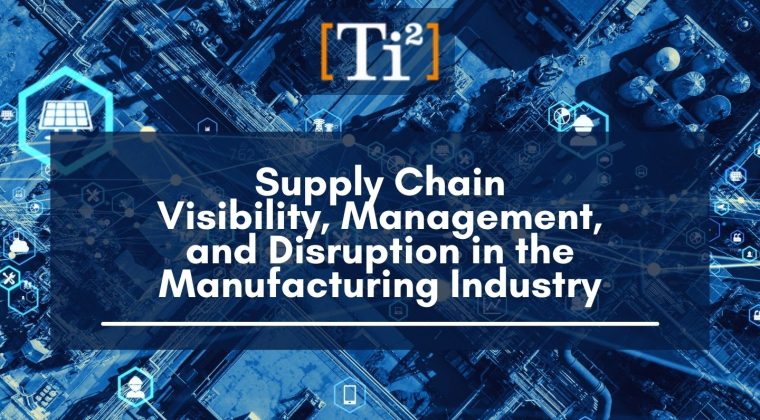Although improving the supply chain is mainly done to help production and distribution, the manufacturing process is proven to have been affected in variety of ways due to the pandemic.
Some recent challenges include stock availability for production, cost, margin, and process structure for manufactured items as well as company infrastructures in interacting with both customers and suppliers.
Entrepreneurs and chief executives worldwide are now considering supply chain disruption as one of the greatest threat to economy and company growth. This being said, the seven areas of supply chain now requires much more attention than usual. Purchasing, manufacturing, inventory management, demand planning, warehousing, transportation, and customer service explains the complete cycle of the production and distribution process.
First and foremost, to ensure an effective and efficient supply chain, all these functions must interact and depend upon one another greatly.
VISIBILITY
Manufacturing in supply chain describes the process of transferring and transforming raw commodities to finished products. Oftentimes to produce a crafted product, the structure requires more than one manufacturing process before it is transported and distributed to the retailer or consumer.
Plastics Today source that an overwhelming 88% of manufacturers want to thin their supplier pool, according to a survey by on-demand digital manufacturing company Fictiv.
According to surveys, 59% respondents in the industry believe that improving supply chain visibility is their main priority in 2022, while 45% chose improving customer satisfaction.
88% of companies want to reduce suppliers to streamline production and gain control and predictability to address the increasing customer demand.
90% of companies are now utilising digital manufacturing technology – this shows the importance of supply chain analytics and visualisation, on-demand, industrial IoT, intelligent asset management, robotics, AR, and other platforms.
Improving visibility in the supply chain and manufacturing system will help reduce certain turmoils that occurred, such as out-of-place shipping containers, record freight rates, etc.
MANAGEMENT
Agility comes with visibility. While profitability comes with risk management. Organisations must consider readjusting and adapting their workforce to ensure that the different flow of supply chain is suitable for continuity and growth in the long run.
According to Bank of America, supply chain in Q3 2020 increased by 412% and 123% from Q2 2021. To keep things flexible, agile, and resilient, survey from McKinsey shows that companies are planning to combine increases in inventory of critical products, components, and materials to expand supply bases while localising supply and production networks.
The hypothesis shows that companies are much less likely to implement nearshoring or regionalisation strategies.
A formal supply-chain risk-management processes must be set out
DISRUPTIONS
Survey proves that the pandemic transition to remote working has the most immediate effect in the industry. For better or for worse, it is strongly correlated to management and operational ethics, 42% of respondents confessed that remote working has caused delays in supply-chain decision making, while 58% reports a good planning performance of supply chain.
Some positive factors include the use of various modern digital tool, sites, and softwares – some challenges and solution to face head on are:
- Using Artificial Intelligence and Machine Learning as tools to face yet another pandemic-related disruption.
Remember that business continuity is more important than short-term margin. Invest in digital technology that contributes bigger data analysis and measurements for your manufacturing facility.
- Climate change will increase scarcity and cause increased energy rate
Climate change will cause inflation – manufacturing and supply chain processes will not be able to defy this issue. Plan in advance how to overcome this through digitalisation, integrated with data visbility for weather, extraction, shipment, and delivery data.
- Increased visibility and risks management is required not only to create a resilient supply chain but focus on values that require special attention whether the focal point lies behind the partners, customers, or even the shipping companies.
Create a supplier and customer integration to see everything form end-to-end without any human interaction requirement. Modern manufacturers require a flexible process to remain competitive in the market.
Realising an intelligent automation system and devices with calculatable expenses and high market acceptance may be hard but the best way to transition with a seamless process is by connecting with device manufacturers such as CODESYS to benefit from the extensive features with easy adaption to different system requirements and environments.
CODESYS is the leading manufacturer-independent IEC 61131-3 automation software for engineering control systems, offering various intelligent components for manufacturing needs.
Ti2 can help your turn-key supply chain requirements from R&D, hardware/software/mechanical/electrical integration, training & support, etc., please click projects, products & services to learn more.
Ti2 is currently very focused on working with its global partners to secure stock and avoid long delay times in delivering products to their customers. Together with our trusted partners, we are here to provide solutions.
Please click here to email us your inquiry, we would like to hear from you.
Article inspired from supplychain4me, supplychain, mckinsey, supplychaindigital, and plasticstoday.



